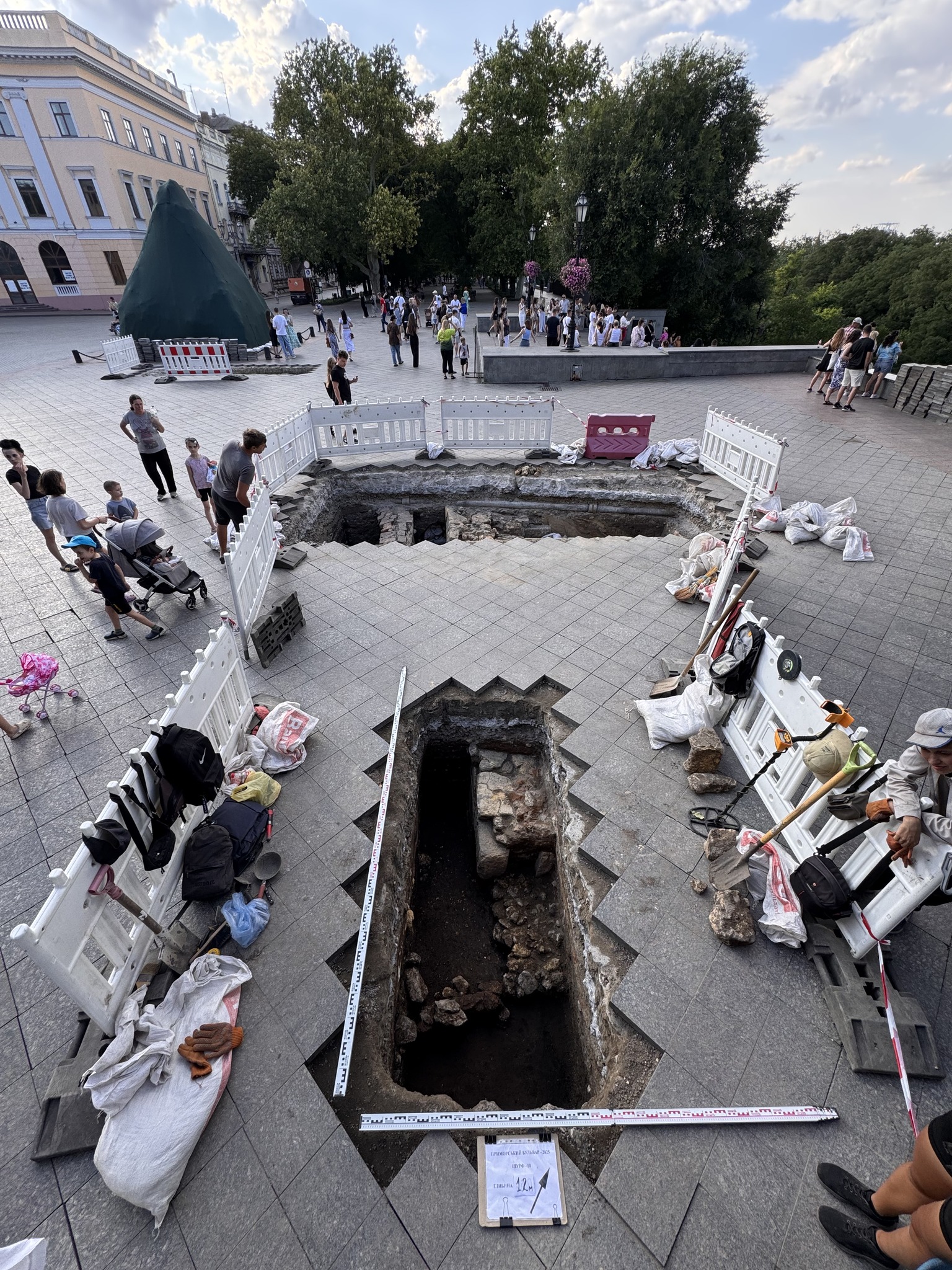Archaeological excavations at Primorsky Boulevard near the Duke de Richelieu monument in Odesa have uncovered 14th-century Genoese materials, rector of the South Ukrainian National Pedagogical University, Andriy Krasnozhen, wrote on Facebook on 19 July.
The three-week dig, conducted by students from South Ukrainian National Pedagogical University and researchers from the Academy of Sciences Institute of Archaeology, revealed cultural layers from the Italian fortress called Ginestra, followed by the Ottoman fortress Hadjibey.
“The archaeological expedition on Primorsky Boulevard in Odesa is complete. An extraordinarily successful season in terms of results,” wrote university rector Andriy Krasnozhon on Facebook.
The excavated materials show that an Italian fortress originally stood on this territory, later replaced by Ottoman fortifications. Remains of these fortifications were discovered near the funicular railway.
Ivan Liptuga, director of Odesa City Council’s culture department, commented that this represents “a major event for the city, for the country, for history.”
“Now this will become one of the attributes of the universal value of the UNESCO World Heritage Site!,” he said.
The excavations resumed on 30 June 2025.
“Now we know exactly what is literally located under the Duke. Under him are cultural layers 2,500 years old. These are remains of the ancient Greek colony Harbor of Istrians. It was created in the 6th century BCE and existed for 300-400 years,” Krasnozhon said earlier.
Ground-penetrating radar studies in 2021 first detected an anomaly on Primorsky Boulevard unrelated to modern communications. Follow-up investigations in spring 2025 confirmed these findings. Krasnozhon expressed confidence that “a stone fortress Hadjibey stood here.”
The rector thanked Odesa Mayor Hennadiy Trukhanov and European Solidarity faction MP Oleksiy Goncharenko for supporting the expedition. He promised to provide more detailed results later.
No previous excavations had been conducted on the semicircular square where the Duke monument stands.
The Italian maritime republic centered in Genoa existed from 1005-1797, maintaining an extensive network of settlements and trading posts across the Mediterranean, Black Sea, and European Atlantic coast. The merchant-ruled oligarchic republic profited significantly from Black Sea slave trade until the mid-15th century, actively exporting slaves to Egypt and Western Europe.
Read also
-
Italy cancels Putin ally conductor Valery Gergiev’s first Western concert since Ukraine war
-
“Most valuable thing we have”: Ukrainian journalist gifts military chevrons to Azerbaijan president Aliyev
-
Ukrainian ex-police chief dies mysteriously at Spanish complex where Russian defector was assassinated in 2024




